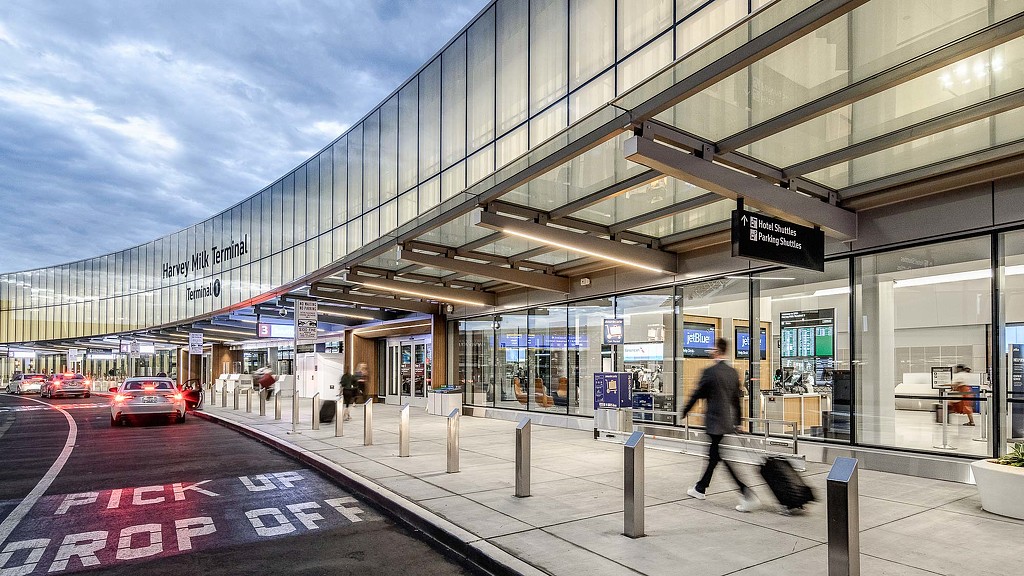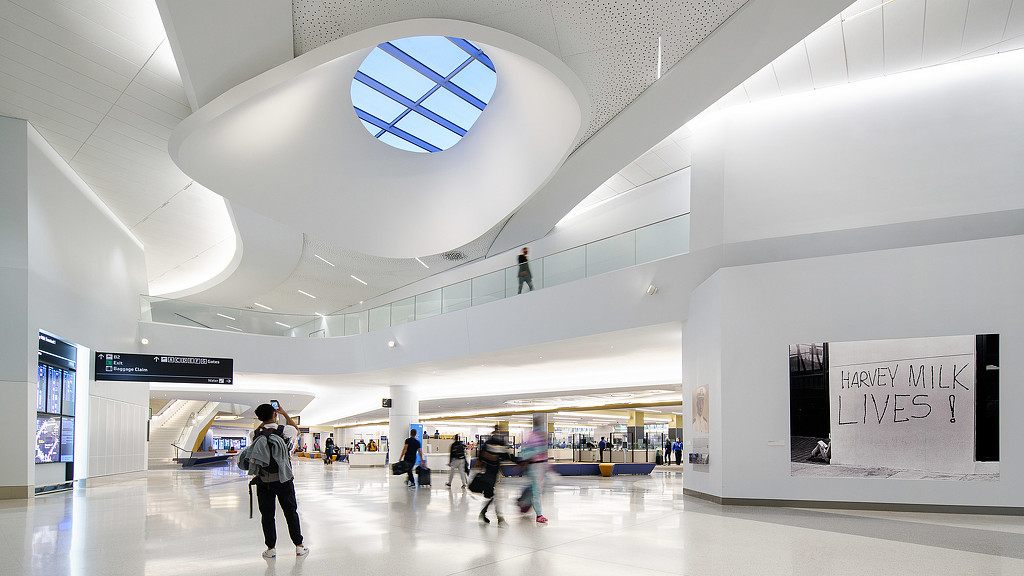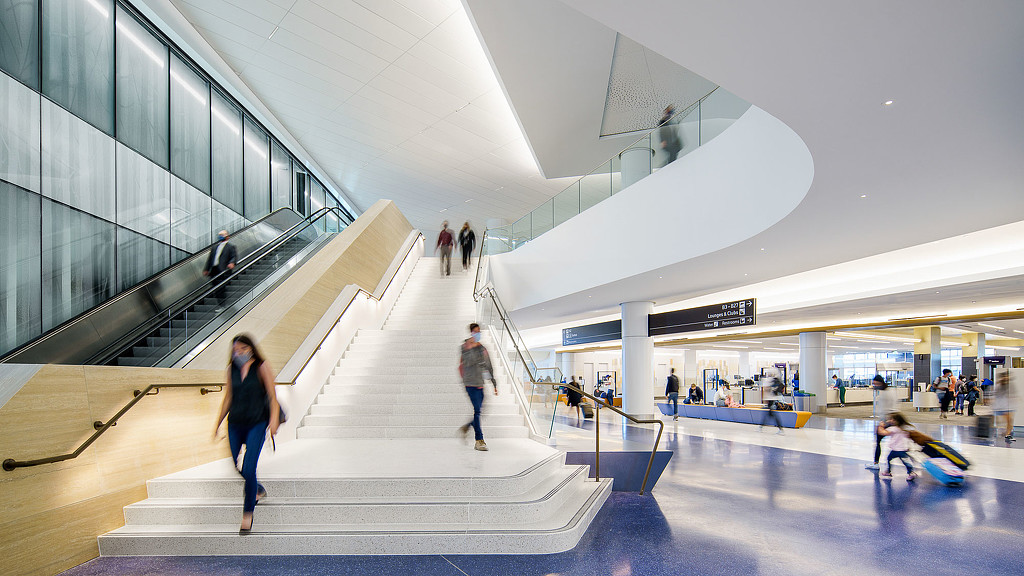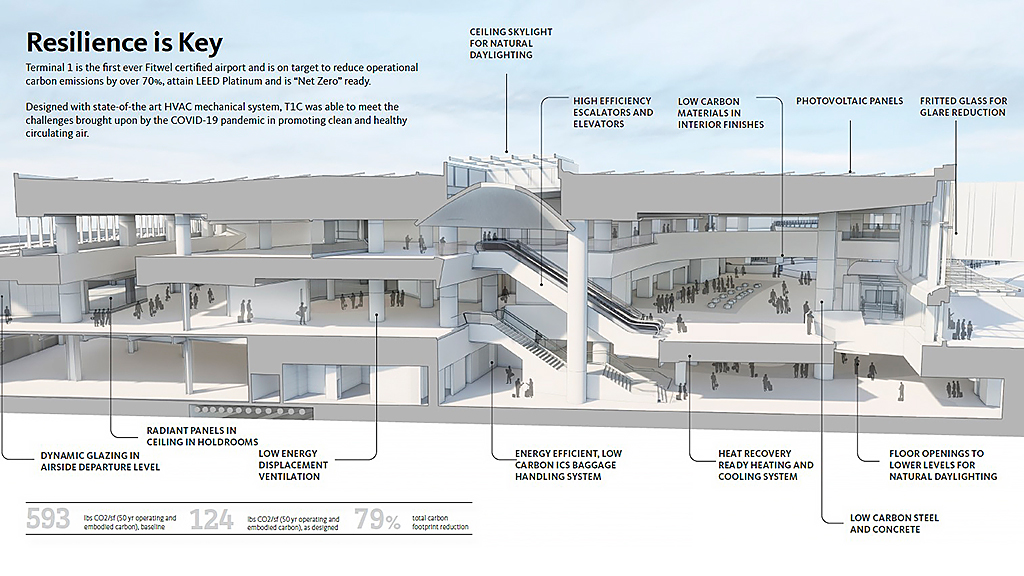San Francisco International Airport, T1 Net Zero Program
San Francisco, California
San Francisco International Airport (SFO) has set the goal of becoming the first airport in the world to achieve zero carbon, zero waste, and zero net energy. At SFO’s Terminal 1, the challenge of reaching net zero is particularly acute as passenger traffic is projected to increase 70% by 2025. The airport enlisted Gensler’s sustainability services to take on this ambitious challenge. In the process, the team established a universal energy efficiency model, applicable to any terminal around the world.
Gensler’s team of Climate & Sustainability consultants researched existing usage patterns, mapped demand, and benchmarked data against other airports around the country. Leveraging this data to identify areas of challenge and opportunity, the team developed strategies for significant energy and carbon reduction in the new terminal. To vet the viability of these strategies, Gensler’s sustainability team collaborated with stakeholders to analyze the operational and experiential implications and, after culminating the results, crafted recommendations to the architectural team and client, documenting impact, payback schedule, and return on investment. The sustainable strategies presented range from smart equipment and controls to advanced envelope design and materials.
The airport enlisted Gensler to conduct a Carbon Use Intensity (CUI) Study, which estimated the baseline 50-year operating and embodied carbon footprint at 593 lbs/CO2e/sf — about average for a U.S. airport of roughly SFO’s size. The final set of recommendations, including new all-electric compatible systems, dynamic glazing, high-efficiency baggage handling, certified GHG free supplied electricity, and on-site renewables will result in a 50-year CUI of 124 lbs/CO2e/sf — a significant 79% reduction, which the team is now equipped to repeat at other airports.




